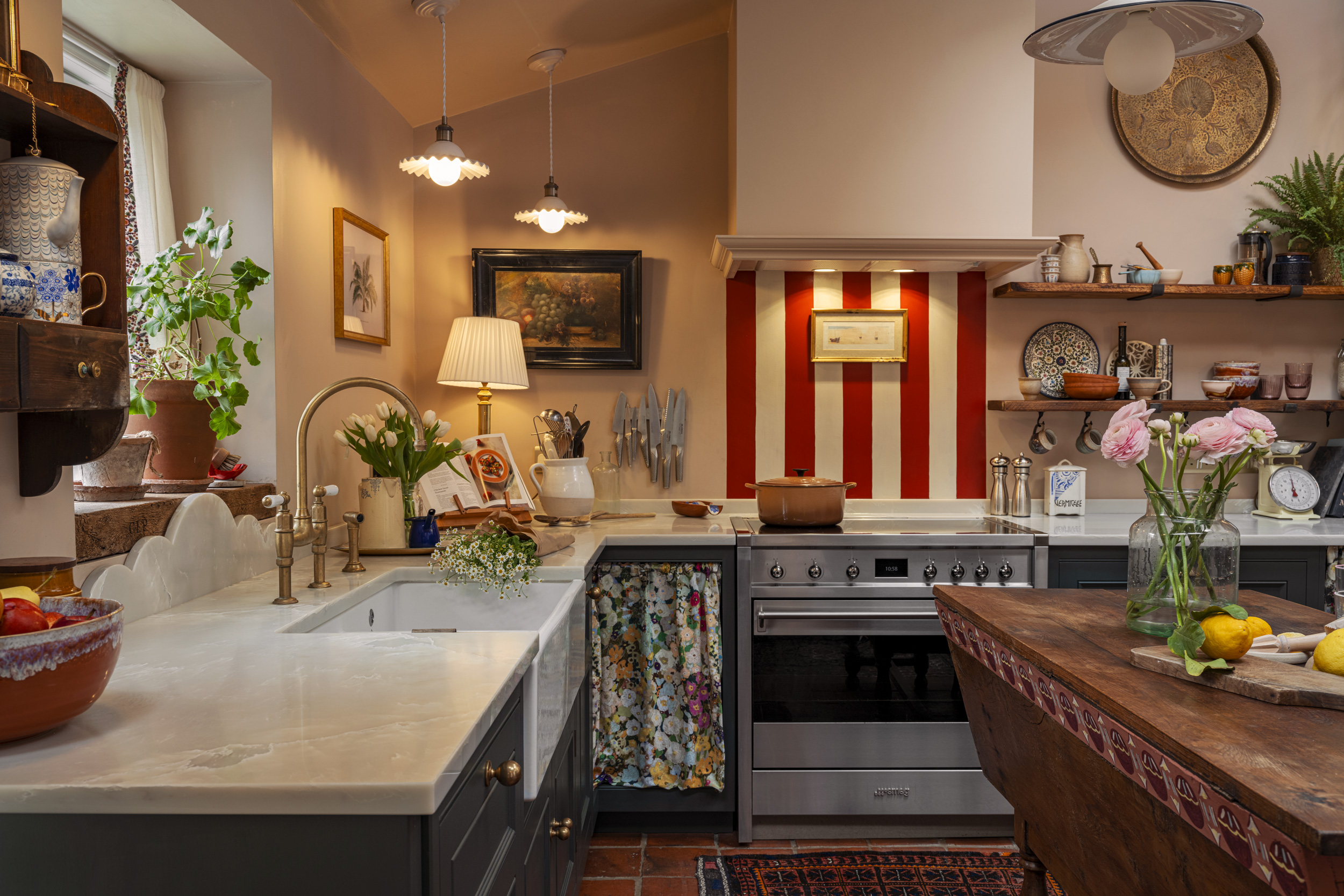
One of the most coveted kitchen features, the island is a multifunctional piece offering additional space to store items, prepare and enjoy food, socialise and work. Proving useful every day, it can be fitted in large or compact kitchens alike, thanks to the variety of shapes, sizes and clever designs available.
Matt Baker, Kitchen Designer at Harvey Jones, shares his practical tips to plan the perfect kitchen island.
MAIN USE
One of the first things you should think about when considering a kitchen island is its main purpose. Is it for extra storage, cooking or entertaining? If you’re planning to use your island mainly for storage, avoid incorporating a sink or a socket tower, as these features take up a lot of cabinet space. A gorgeous flush- fitted induction hob, on the other hand, will add a very desirable level of detail, particularly when paired with a built-in extractor. For the same purpose, built-in pan drawers and shelves are a must to make the most of the space.
SIZE
Next, the most important element has to be the walkaways around the island. As a rule of thumb, they need to be 1,000mm wide in order to be safe and practical in a kitchen.
Many customers seem to think the bigger the island, the better. Wide islands are sure to make a big impact in a kitchen, however, they’re not the most practical solution, as you have to be able to reach the middle when cooking. Try to keep it no deeper than 1,400mm front to back.
COMPACT SPACES
If your kitchen is smaller in size but you still want the island to act as a social hub for family and friends, you should consider whether there is enough space between those sitting at the island and the cooking station. Make sure you have enough space between the hot pans and boiling water and those sitting at the breakfast bar, so that the island remains a functional yet sociable space where you can prepare food and entertain guests simultaneously.
An alternative solution to an island in a smaller kitchen is a moveable butcher’s block. It’s a compact piece that provides additional storage and work surface area, and it can be moved around the room creating added flexibility.
LIGHTING
Make sure the kitchen island fits the lighting plan. As it often serves as the main food preparation area, the island needs to be well-lit. Whether opting for spotlights or lanterns, ensure that the centre of the island in particular is bright.
TECH
If you need power points in an island, cabling will need to be laid before screed is put down. Sockets can then be fitted before the worktops are installed. I would personally urge every customer to go with sockets that have USB slots in them these days, as most of our tech uses these to charge.







